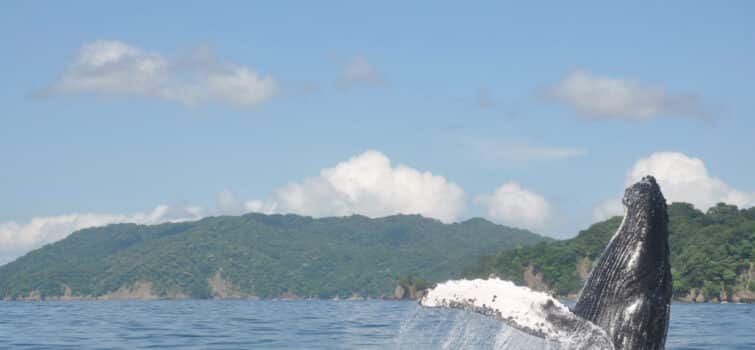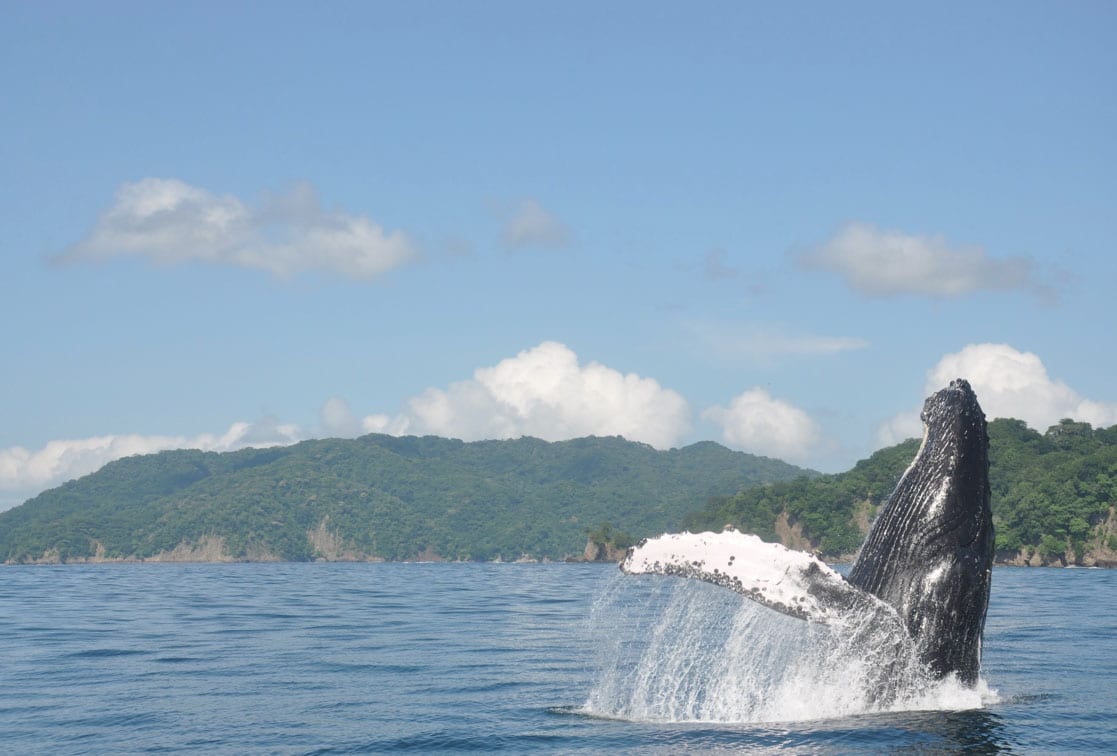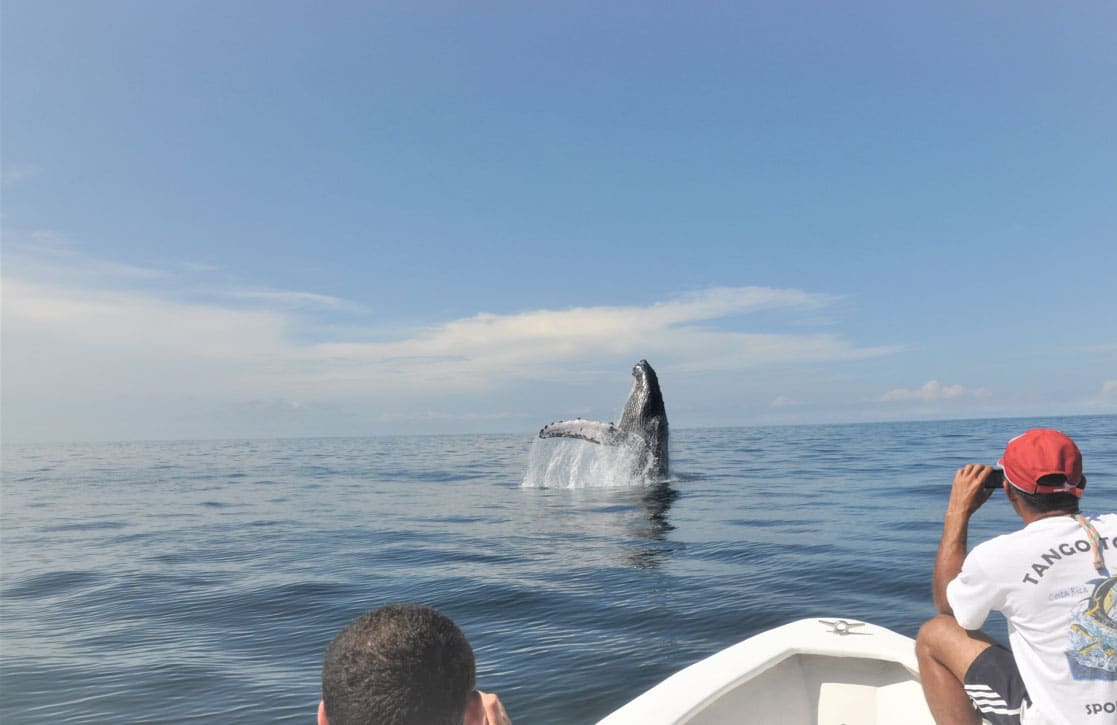Let’s go whale watching!
Talking about whales is speaking in superlatives: adult, these animals can measure up to 15 meters and easily weigh an impressive 30 tons.
The whales seen in Costa Rican waters are humpback whales. They get their name from the ‘hump’ on their back that is even more visible when they dive into the deep. Often the first thing we see of them is the jet of water that is produced when they exhale. It can reach three meters in height and betrays the presence of the animal.
The humpbacks are the most gymnasts of all, because of the turns they take … their high jumps sometimes make them come above the water surface completely, throwing themselves up and turning to land on their backs. They give quite a show. Also, they have become used to the tourist boats that seek to see them, and they come to play very close at times.
They are also known for their songs, especially the males. These can be heard up to a distance of 20 km, and there are known cases where they sing for a whole day.
One would think that being so big, what they eat will also be big … well no … they open their mouth to let thousands of liters of water enter. Then, with their tongue, they scoop out the water and what remains what they really want to eat: krill, plankton and small fish.
Like humans, whales are mammals. From the age of 5, every two or three years, females usually have a young, which weighs almost a ton at birth. Their pregnancy lasts 11 months, and they breastfeed for 6 months. Just born, the calf has to learn to swim. It does so guided by its mother, who stays close during this period. In general, whales reach about 50 years.
In the middle of the last century, whales were inscribed on the list of endangered species. However, many countries banned whale hunting, which allowed their numbers to increase again. In 2008, the United Nations decided to remove them from the endangered species list again.
Today, in many countries, including Costa Rica, whale watching is a major tourist attraction.
However, as whales migrate, they cannot always be seen. On their trips from Antarctica to Alaska or vice versa, the best seasons to see them in our country are from August to early November and from January to April.
A hint: do you want to know if you found yourself a giant friend who comes to look for you time and again, or if the whale you see is a different one each time? Look for the tail fin pattern, which is different for every humpback whale.
References:
https://www.britannica.com/animal/baleen-whale
https://nl.wikipedia.org/wiki/Bultrug
https://www.adobecar.com/explore-costa-rica/temporada-de-avistamiento-de-ballenas-en-costa-rica/
https://oceanwide-expeditions.com/es/destacados/vida-silvestre/ballena-jorobada
https://www.costaricadiveandsurf.com/humpback-whales-migration/





